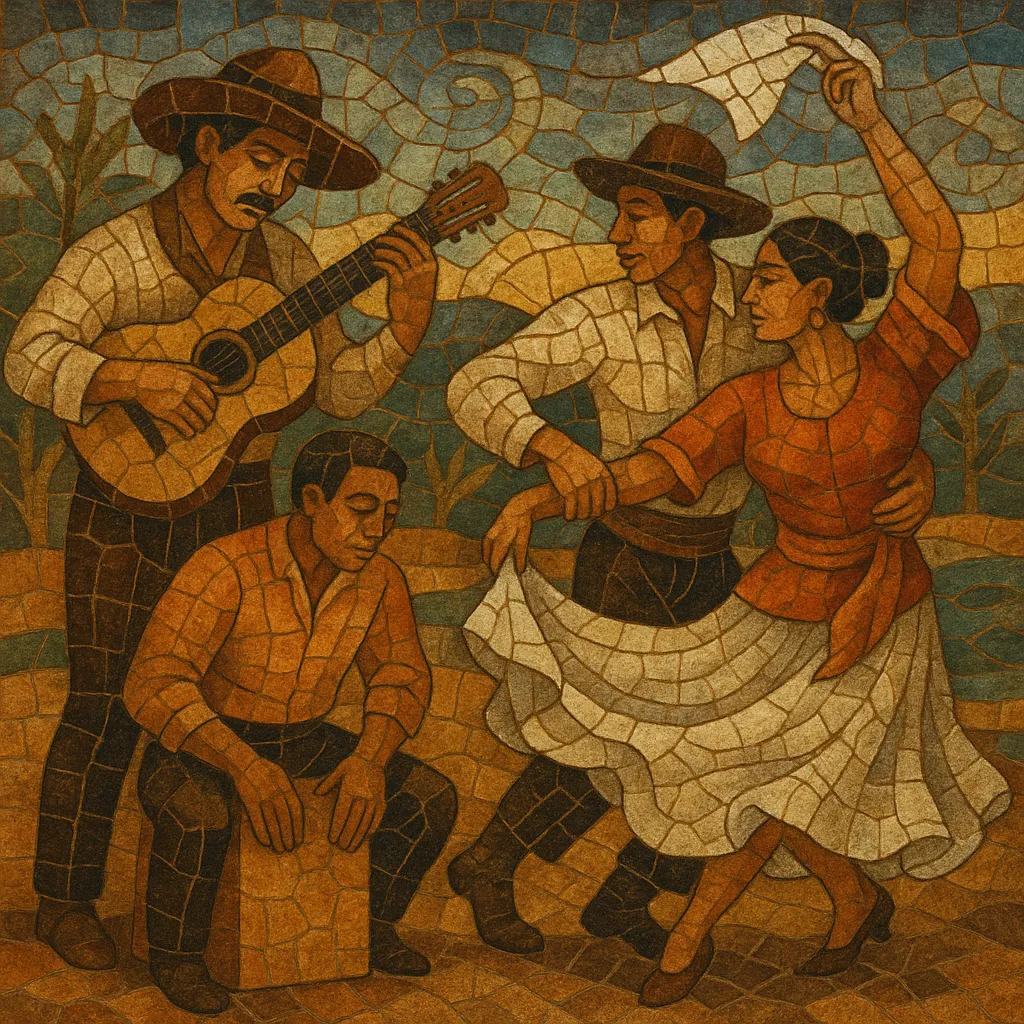Tondero is a traditional song-and-dance form from the northern coast of Peru, especially the Piura and Lambayeque regions. It blends Spanish (Andalusian) dance-song traits with Afro-Peruvian rhythm and local criollo poetry, yielding a bittersweet yet lively character.
Musically it is typically in compound meter (felt in 6/8, often interlocking with a 3/4 hemiola), led by guitar with percussive support from cajón, quijada (donkey jawbone), palmas (handclaps), and small idiophones. Performances often begin with a slow, plaintive introduction (the “Triste”) before moving into the more rhythmic tondero proper and concluding with a bright, accelerated “Fuga.”
Lyrically, tondero evokes northern coastal life—dry forests (algarrobos), horses, rural courtship, longing, and the sea—frequently delivered in décima-style verses with call-and-response refrains suitable for both intimate peñas and festive community dances.
Tondero crystallized on Peru’s northern coast during the late colonial and early republican periods. Its core elements reflect a confluence of Andalusian song-dance practices (notably fandango and related Iberian forms), Afro-Peruvian rhythmic sensibilities brought by enslaved and free Afro-descendant communities, and local criollo poetry such as the decimista tradition (linked to the cumanana in northern Peru). This mixture yielded a style that begins with a lament-like Triste and resolves into a driving dance, mirroring a journey from introspection to communal celebration.
Across the 20th century, the rise of radio, urban peñas, and the broader Música Criolla movement helped document and codify tondero’s performance practice. Guitar innovators and cajón players standardized accompanimental patterns, while vocalists brought the style to Lima’s stages. Although marinera norteña became the northern coast’s most visible emblem, tondero remained a cherished regional identity marker—sustained by local festivities (such as Piura’s tondero and cumanana gatherings) and by Afro-Peruvian ensembles who preserved its percussion language and dance steps.
From the late 20th century onward, leading criollo and Afro-Peruvian artists incorporated tondero in recordings and concerts, revitalizing interest beyond its home region. Today, ensembles may fuse tondero with jazz harmonies or contemporary production while preserving characteristic meters, hemiolas, the Triste–Tondero–Fuga arc, and the poetic themes of the northern coast. Community festivals and dance schools continue to transmit the genre’s steps and etiquette to new generations.


